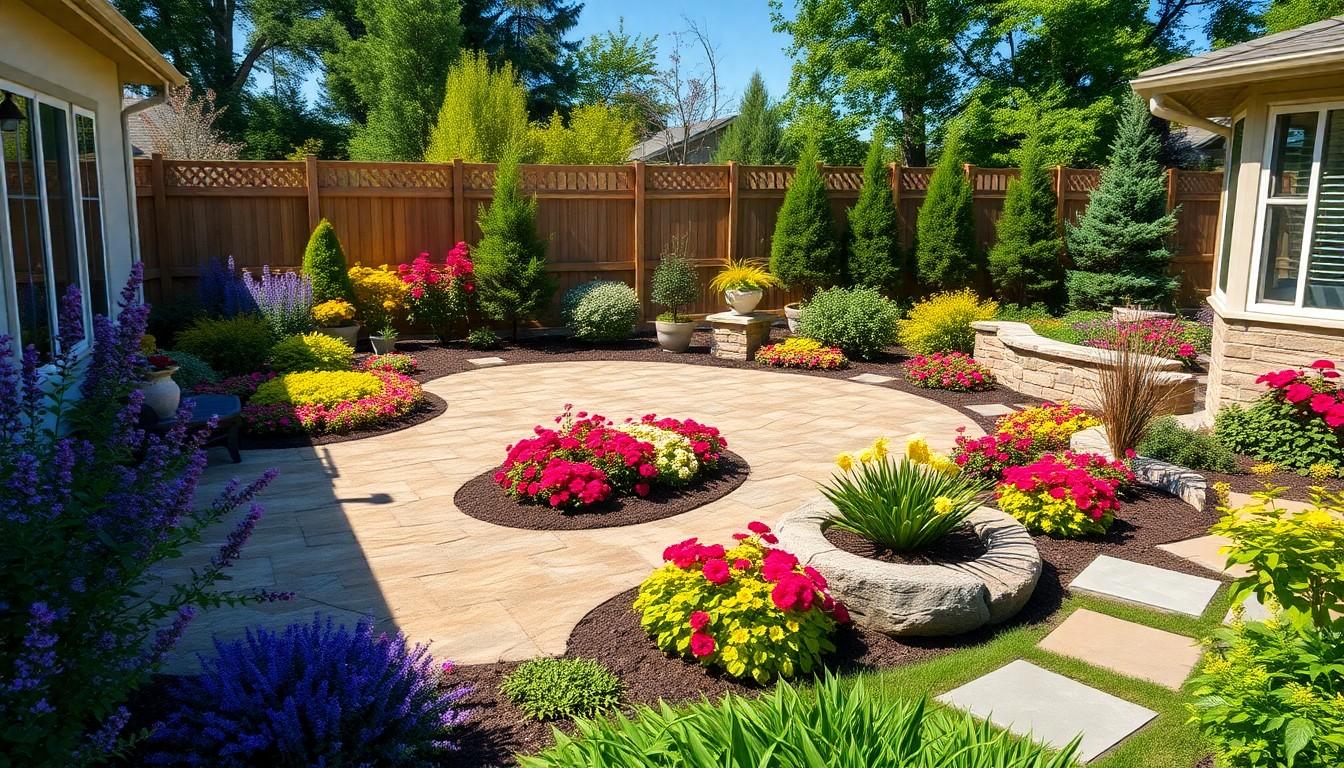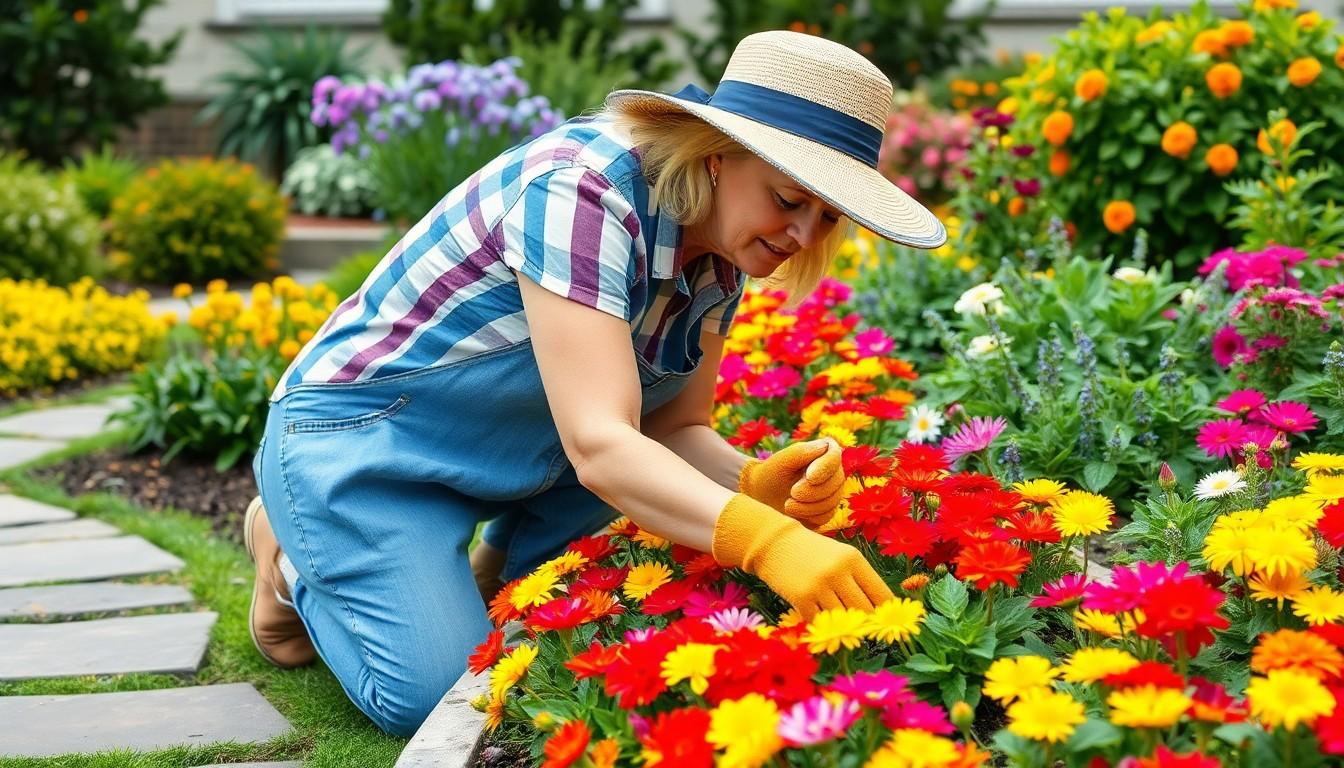When it comes to transforming outdoor spaces, many people throw around the terms “landscaping” and “gardening” like they’re interchangeable. But let’s face it—calling a gardener a landscaper is like mistaking a chef for a line cook. Both are essential, but they play very different roles in the culinary world of outdoor aesthetics.
Difference Between Landscaping And Gardening
Landscaping and gardening, while interconnected, fulfill distinct roles in outdoor design and care. Both disciplines enhance outdoor environments but differ in scope and methods.
Definition of Landscaping
Landscaping involves the design and modification of an outdoor area to create an appealing space. This field encompasses various elements such as terrain reshaping, the installation of structures, and the inclusion of pathways. Professionals in landscaping often focus on aesthetics by integrating hardscaping features like patios, decks, and retaining walls. Landscaping incorporates techniques that enhance functionality and appearance, leading to improved property value. Experts typically assess the land’s natural features and recommend designs that harmonize with the surroundings. These intricate plans often require significant planning, investment, and skilled labor to execute successfully.
Definition of Gardening
Gardening centers around the cultivation of plants and the care of garden spaces. This practice includes planting flowers, vegetables, and shrubs, along with maintaining soil health and managing pests. Gardeners spend considerable time nurturing plants, ensuring they thrive through watering, fertilizing, and pruning. Unlike landscaping, gardening focuses primarily on living elements and their maintenance rather than structural design or layout. The activity can extend to creating garden beds, greenhouses, and compost systems. Through dedicated care and attention, gardeners cultivate not just plants, but vibrant ecosystems that contribute to the overall landscape.
Key Differences Between Landscaping and Gardening

Landscaping and gardening each focus on distinct aspects of outdoor spaces. Understanding their key differences clarifies their unique roles.
Focus and Objectives
Landscaping emphasizes creating aesthetically pleasing outdoor environments, balancing elements like structures and pathways. It aims to enhance curb appeal, functionality, and outdoor usability. Objectives often include designing layouts for patios, fountains, and lighting features that invite social activities. Gardening, on the other hand, concentrates on nurturing plant life and fostering a healthy ecosystem. Objectives involve growing flowers, vegetables, or shrubs, along with maintaining soil quality. The focus shifts toward the thriving health of living organisms, with goals centered on blossoming flowers or yielding crops.
Techniques and Practices
Landscaping employs various techniques, including grading, hardscaping, and installing irrigation systems. Professionals use heavy machinery for tasks such as excavation or stone placement. Designing an overall landscape plan often requires collaboration with architects and engineers. Gardening practices encompass planting, pruning, and fertilizing plants, ensuring they receive adequate water and nutrients. Techniques such as crop rotation and companion planting minimize pests and enhance growth. Knowledge of seasonal changes influences both landscaping designs and gardening plans, shaping choices in plant selection and timing for upkeep.
Similarities Between Landscaping and Gardening
Both landscaping and gardening contribute significantly to enhancing outdoor environments. They focus on creating visually appealing spaces for enjoyment and relaxation. Each discipline often requires attention to detail, with an emphasis on aesthetics.
Collaboration among professionals in both fields can lead to impressive results. Landscapers may work closely with gardeners to select appropriate plants that complement designed features.
Nature plays a central role in both activities, with both disciplines aiming to improve opportunities for wildlife habitation. They cultivate healthy ecosystems that benefit local flora and fauna.
Sustainability is an important factor shared by both landscaping and gardening. Implementing eco-friendly practices benefits the environment while promoting biodiversity.
Tools and techniques overlap between the two, with both involving similar equipment for tasks like soil preparation and planting.
Education and experience in horticulture are beneficial for success in both fields. Knowledge of local climate and soil conditions enhances outcomes in both landscaping and gardening.
Both practices strive for balance and harmony within outdoor spaces, emphasizing the importance of planning. A well thought out design can integrate gardens into landscaped areas, resulting in cohesive outdoor environments.
By understanding their similarities, one can appreciate how landscaping and gardening work together to create beautiful and functional outdoor areas.
Transform Your Outdoor Area Today
Understanding the difference between landscaping and gardening is essential for anyone looking to enhance their outdoor spaces. While landscaping focuses on design and structural elements to create visually appealing environments, gardening emphasizes the nurturing of plants and ecosystems. Each discipline plays a vital role in achieving a harmonious outdoor aesthetic.
By recognizing their unique contributions and collaborating effectively, professionals in both fields can create stunning landscapes that are not only beautiful but also sustainable. This synergy not only elevates the aesthetic value of properties but also promotes biodiversity and supports local wildlife. Ultimately, both landscaping and gardening work in tandem to transform outdoor areas into inviting spaces for enjoyment and relaxation.

